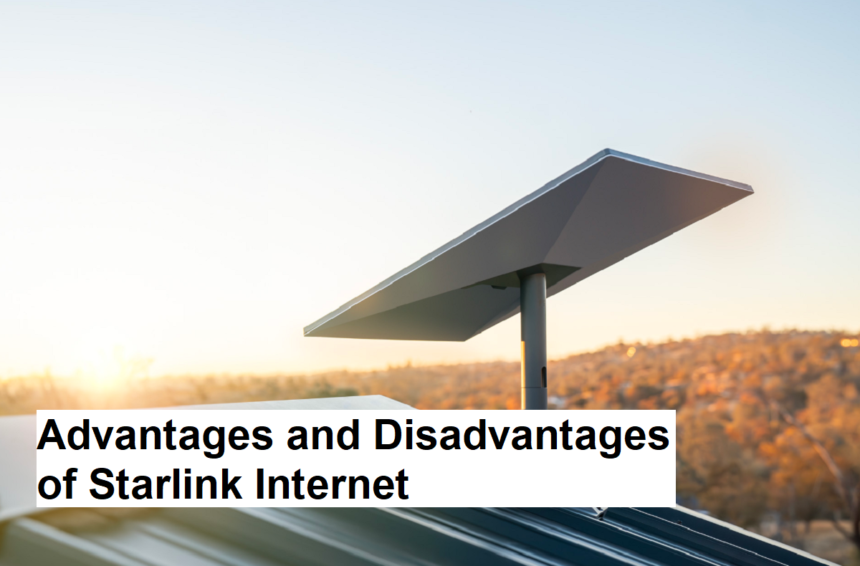Introducing
In recent years, the demand for high-speed, reliable internet has skyrocketed, especially in rural and remote areas where traditional broadband infrastructure is lacking. Among the innovative solutions to bridge this digital divide is Starlink, a satellite internet constellation operated by SpaceX. While Starlink boasts numerous benefits, it also comes with its own set of limitations. This article explores the key advantages and disadvantages of Starlink internet, helping consumers and stakeholders make informed decisions about its use.
What is Starlink?
Starlink is a satellite-based internet service designed to provide global broadband coverage, aiming to deliver fast, low-latency internet to even the most isolated areas. The system involves a constellation of low Earth orbit (LEO) satellites (at altitudes around 550 km or 340 miles) that communicate directly with user terminals, or “dish” antennas. This approach allows Starlink to offer internet services with lower latency compared to traditional geostationary satellites.
Advantages of Starlink Internet
1. Wide Coverage, Including Remote Areas
One of Starlink’s biggest strengths is its capacity to serve remote and rural areas where traditional fiber or cable internet infrastructure is unavailable or extremely costly to deploy. This makes it a game-changer for rural communities, agriculture, maritime industries, and even remote research stations.
2. High-Speed Internet
Starlink provides impressive internet speeds that can reach up to 150-250 Mbps under optimal conditions. This allows users to stream videos, participate in video calls, and conduct online activities comparable to urban broadband services.
3. Low Latency
Compared to conventional satellite internet, which often suffers from high latency (sometimes over 600 ms), Starlink’s low Earth orbit satellites provide latency levels around 20-40 ms. This latency is sufficient for most online activities, including gaming, video conferencing, and real-time communication.
4. Ease of Setup and Mobility
Starlink’s user terminals are relatively easy to install—requiring only a clear view of the sky and a power source. Additionally, the system is mobile; users can relocate their dish to different locations, making it suitable for vehicles, boats, or temporary setups.
5. Potential for Global Connectivity
Starlink’s goal is to create a truly global network, providing internet access nearly everywhere. As the constellation expands, coverage will improve, bringing connectivity to underserved parts of the world, reducing the digital divide.
Disadvantages of Starlink Internet
1. High Cost of Equipment and Service
The initial equipment cost can be prohibitive for some users, with the dish and router priced around 500−500−600 USD. Monthly service fees are also higher than traditional broadband, typically around $99 USD, which can be expensive for some households.
2. Weather Dependency
Starlink’s performance can be affected by weather conditions such as heavy rain, snow, or thick cloud cover, which can cause signal attenuation or temporary service disruptions.
3. Limited Bandwidth During Peak Times
While speeds are generally high, network congestion during peak hours can result in slower speeds or increased latency, particularly as more users join the network in a specific area. This is a typical challenge for satellite networks competing with terrestrial broadband capacities.
4. Environmental and Astronomical Concerns
Starlink satellites are visibly bright and can contribute to light pollution, affecting astronomers’ observations and wildlife. There are debates about the environmental impact of launching and maintaining such a large satellite constellation.
5. Coverage and Latency Limitations
Although Starlink offers low latency, it still doesn’t match the speed and reliability of fiber-optic connections in densely populated urban areas. Moreover, in some regions, coverage may be incomplete or inconsistent due to the ongoing deployment of satellites.
Conclusion
Starlink represents a revolutionary step forward in satellite internet technology, offering high-speed connectivity and broad coverage, especially in underserved areas. Its low latency and ease of setup make it attractive for a variety of users, from rural residents to travelers. However, high costs, weather sensitivities, environmental concerns, and occasional service limitations highlight areas where Starlink still has room for growth.
As technology advances and the satellite constellation expands, many of these disadvantages may lessen, making Starlink an even more viable alternative or complement to terrestrial broadband. For now, it remains an innovative solution with significant benefits, especially for those with limited options for reliable internet access elsewhere.












